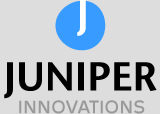IT Applications, Products and Platforms
Designing a successful IT application, platform or product requires thinking about both the big picture and the technical nuts and bolts. Here are some key areas we keep in mind:
Functionality and User Needs
Purpose
What problem are you solving or what need are you fulfilling with this platform? Who are the target users and what tasks will they be using it for? What do we know about the volume, regularity, complexity and number of users involved with repetitive tasks that IT do repeatedly, with greater accuracy, consistency and in a more timely and error free way? Understanding user needs is crucial for designing a user-friendly and efficient platform.
Feasibility
Can this platform be built with current technology and resources? Does it make financial sense to develop it? What are the hidden costs involved with development including building and managing CI/CD pipelines, automated test frameworks, and understanding the different license fees involved including how and when they are charged? What impacts costs over time and the platform’s lifecycle including considering user growth, scalability planning, exchange rate fluctuations, support pricing and license fee arrangements? Considering technical, economic, legal, and scheduling feasibility helps avoid roadblocks later in development.
User Interface (UI) and User Experience (UX)
How well does the platform prioritise a positive user experience, with intuitive interfaces, responsiveness, navigation flow, and accessibility considerations for different devices and user groups? How well does the platform prioritise a positive user experience, with intuitive interfaces, responsiveness, navigation flow, and accessibility considerations for different devices and user groups? How effortless and intuitive is the platform to use? A well-designed UI/UX is essential for user adoption and satisfaction. How well does the platform prioritise a positive user experience, with intuitive interfaces, responsiveness, navigation flow, and accessibility considerations for different devices and user groups?
Feedback and Iteration: Designing IT application platforms is an on-going and iterative process. Gathering learning and feedback from users and stakeholders, then incorporating it into future iterations is essential for continuously improving the platform’s usability, performance, and features.
Technical Considerations
Buy vs Build
Should you develop a custom platform from scratch, or is there an existing solution (SaaS) that meets your needs? Consider factors like cost, development time, flexibility, configuration rather than bespoke work / customisation, integration and data requirements, maintenance, upgrades and support.
Flexibility and Customisation
IT application platforms should be flexible enough to accommodate changing business requirements and user needs. This may involve designing modular architectures, configurable settings, and extensible features that can be easily adapted or customised.
Scalability
Will the platform be able to handle growth in users, workload/processing demand and data storage over time? How will the platform be able to scale up or down resources such as computing power, storage, and network capacity as needed so performance isn’t sacrificed? Designing for scalability from the beginning ensures the platform can adapt to future demands.
Performance
How will the platform deliver high performance and low latency to ensure a smooth user experience? Performance considerations include optimising code, database queries, and network communication to ensure that the platform operates efficiently and responds quickly to user requests. It may also involve optimising hardware resources, caching mechanisms, load balancing, and efficient data management strategies.
Availability and Reliability
What platform design is in place to ensure high availability and fault tolerance, with redundancy, failover mechanisms, and disaster recovery plans in place to minimise downtime and ensure continuous operation? Will the platform be available whenever users need to use it? Designing for reliability involves implementing redundancy, failover mechanisms, and monitoring systems to ensure uptime and quick recovery from failures.
Security and Updates
How will you keep the platform secure from cyberattacks, unauthorised access, data breaches, and other security threats? How will you handle updates and bug fixes? How is sensitive data handled? Security should be a top priority, particularly for applications handling How does the platform incorporate robust authentication mechanisms, authorisation, access controls, encryption, secure coding practices and auditing mechanisms to protect against various cyber threats? Strong security and a plan for ongoing maintenance are essential.
Interoperability, Data Management and Integration
How will the platform handle data? Will it need to integrate with other existing systems, applications and services within the organisation and externally? Which industry standards does it adhere to, what APIs (Application Programming Interfaces), and data formats to facilitate seamless communication and data exchange are provided, and what common data formats are supported? A well-defined data strategy ensures smooth information flow.
Maintainability
How well is the platform designed with maintainability in mind, allowing for easy updates, upgrades, and modifications as requirements change over time? Designing and planning modular architecture, well-documented code, and automated testing frameworks are key considerations.
Analytics
How will you measure your platform success? What data will you collect and how will you use it to improve the platform over time? Building in analytics capabilities allows you to track usage and make data-driven decisions.
Monitoring and Logging
Robust monitoring and logging capabilities should be in place to track system performance, identify issues, and facilitate debugging and troubleshooting. How will these be handled considering interoperability standards and requirements?
Additional Considerations
Cross-platform support
Will the platform need to be accessible on different devices (desktop, mobile, etc.)? Designing for multiple platforms can increase reach, but also adds complexity.
Governance
How will new features, non-functional requirements, release management and upgrades be managed and governed? What is the right level of platform governance and management and how does this change if the platform is local (one or a few locations), national (numerous locations), international or global? Who pays for new requirements, maintenance and upgrades and how is this done fairly if the platform is shared across sectors, countries or regions? How is the platform architected on an on-going basis at an application level, I&O level, and across the enterprise given local to global considerations?
Compliance and Regulatory Requirements
Depending on the industry, geographic location and application domain, the platform may need to comply with various regulatory and audit requirements, such as data protection laws including GDPR (General Data Protection Regulation), government regulations or industry-specific standards such as HIPAA (Health Insurance Portability and Accountability Act), PCI DSS (Payment Card Industry Data Security Standard).
These considerations often involve trade-offs and compromises, and the specific priorities may vary depending on the application’s requirements, target users, and the organisation’s goals and constraints. By carefully considering all these factors, we can help you design an IT application platform that is functional, secure, scalable, well governed and meets the needs of your users.
Contact us..
How do you know when you are ready to embark on your transformation journey and where to start? We’re happy to share ideas and chat no matter where you are on your journey..

